Email: bprc*hiroshima-u.ac.jp (Please replace*with @)
Date & Time: April 24, 2023
Place: Engineering 110 Lecture Room, Higashi-Hiroshima Campus, Hiroshima University
Program
Commentary: Yukihiko MATSUMURA Professor, Graduate School of Advanced Science and Engineering, Hiroshima University
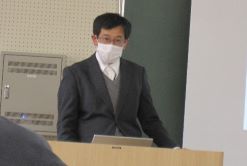
Lecture: Tomohiro ISEKI M2, Graduate School of Advanced Science and Engineering, Hiroshima University
“Gasification of glucose in a rapid heating tube-bomb reactor .”
Utilization of biomass resources is required to prevent global warming. One of the conversion technologies required for utilization of biomass is supercritical water gasification, but generation of solid products reduces the gas yield. It is believed that the gas yield can be completely improved by increasing the heating rate. The objective of this study is to increase the temperature increase rate by using induction heating and to investigate its temperature increase characteristics and gas yield. A batch reactor with a volume of 3.2 mL was heated by an induction heater to gasify glucose, a model compound of biomass.
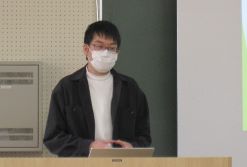
Lecture: Rittanupap THAVORN D3, Graduate School of Advanced Science and Engineering, Hiroshima University
“Comparison of products from the hydrothermal carbonization of cellulose, lignin, and xylose mixture of different fractions.”
This study focuses on the hydrochar product obtained from HTC of the mixture of components, cellulose, hemicellulose (xylose), and lignin, in various ratios at 280 °C for 0.5 to 2 h. The result indicated that interactions between cellulose-xylose and xylose-lignin affected the mass product yield. The characteristics of hydrochar products are also discussed in terms of particle size.
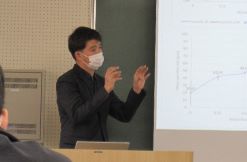
Lecture: Miao LIU M2, Graduate School of Advanced Science and Engineering, Hiroshima University
“Hydrothermal carbonization of pistachio nut shells.”
With the use of fossil fuels, a lot of environmental pollution is caused, so we need to find clean energy. Hydrothermal carbonization can simulate the formation process of coal in the natural environment, converting biomass into hydrochar. In this study, pistachio shells were used as raw materials to convert them into hydrochar through hydrothermal carbonization reaction. By controlling the reaction temperature, reaction time, and raw material ratio, the purpose of increasing hydrochar production was achieved. At the same time, by analyzing hydrochar properties, looking for possible applications. At present, some tests have been completed at 280°C, and it is concluded that the production of hydrochar will first increase and then decrease with the increase of the reaction residence time, and reach a peak when the reaction residence time is 60 minutes.
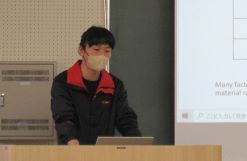
Lecture: Tomohiro ISEKI M2, Graduate School of Advanced Science and Engineering, Hiroshima University
“Hydrothermal liquefaction of fructose using watermelon rind biochar as a catalyst .”
The use of biomass is required because to prevent global warming. Hydrothermal processing is one of the biomass conversion technologies that can produce 5-HMF and levulinic acid from biomass. Hydrothermal treatment sometimes uses catalysts, and inexpensive and easily separable catalysts are required. Therefore, in this study, biochar made by pyrolyzing watermelon rind was functionalized and used as a catalyst. As a result, it was found that bio-char functionalized with sulfuric acid promoted the reaction the most. It was also found that the yields of 5-HMF and levulinic acid varied depending on the reaction temperature.
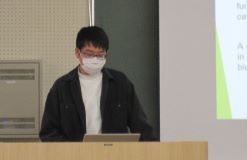
Chair: Yukihiko MATSUMURA Professor, Graduate School of Advanced Science and Engineering, Hiroshima University
HOSTY Association (Graduate School of Advanced Science and Engineering)

 Home
Home



